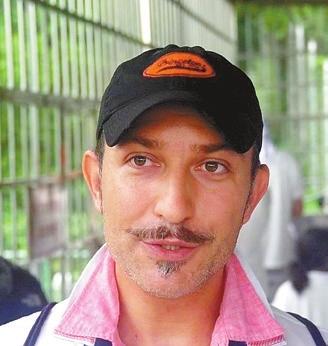Italian professor gives a thumbs-up to Shaoguan development
Writer: Chen Xiaochun | Editor: Zhang Chanwen | From: Shenzhen Daily | Updated: 2022-08-04
A+ A- Print

Matteo Convertino
Matteo Convertino, an Italian ecosystem scientist and engineer, during a trip to the city over the weekend gave a thumbs-up to Shaoguan’s sustainable development endeavors in terms of coordinating ecosystem protection with economic and social development.
“I was born in Italy and I lived in the United States and Japan. I came here to join the university and to try to understand how the ecosystems work here and try to protect them and design ecological engineering solutions to protect the species and the environment,” said Convertino, who moved to Shenzhen half a year ago to become an associate professor at the Institute of Environment & Ecology of Tsinghua Shenzhen International Graduate School.
“I feel great because I see that here in the northern part of Guangdong both the ecology and the environment are thriving. So it’s not just about environmental protection that is pretty much focused on development but it’s actually starting from nature and trying to protect what we have and develop farther in a way that is sustainable,” said Convertino.
The Italian professor praised Shaoguan for doing a good job in preserving the ecological connectivity of different areas. In addition, he was delighted to learn that the city is mulling how to better connect Shaoguan with the Guangdong-Hong Kong-Macao Greater Bay Area through new transportation infrastructure.
“That would be a significant step. They want to make the city much more connected than it is now. I like this idea of sustainable development where we don’t just look at the economy but into the environment and the ecology as well, and into an integrated much bigger framework,” said Convertino.
During his visit to the Shaoguan Urban Planning Exhibition Hall on Saturday, Convertino was surprised to find Matteo Ricci mentioned there.
“I was surprised that Matteo Ricci is really famous in China. ... He was one of the first Europeans to come to China back in the early 1580s,” said Convertino.“And I was also surprised that he came all the way down south to Shaoguan in 1589. So it’s very surprising. Also this guy has the same [first] name as mine,” said Convertino.
During his visit to the South China Tiger Breeding and Research Base, he also adopted the tiger cubs born on the last day of last year and named one of them “Leonardo.”
“An Italian version of the name means ‘brave as a lion.’ But tigers are likely the top predators of forests as much as lions in arid places. It has also a reflection on the bravery of the Italian Renaissance artist and scientist Leonardo Da Vinci who indeed combined both the love and study of the nature together with science and technology. It is a powerful evocative name for both historical and semantic reasons, hopefully bringing luck and exemplifying what we need,” said Convertino.